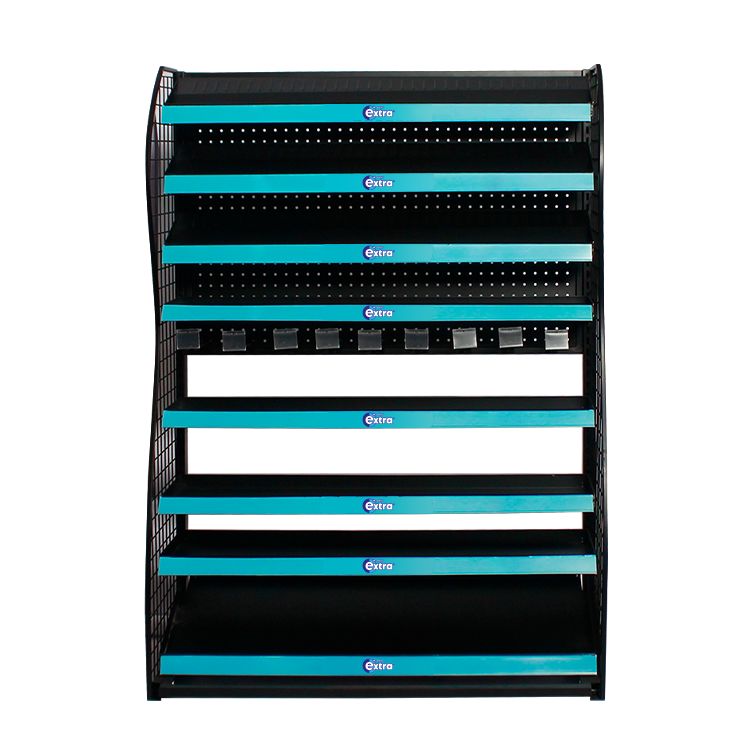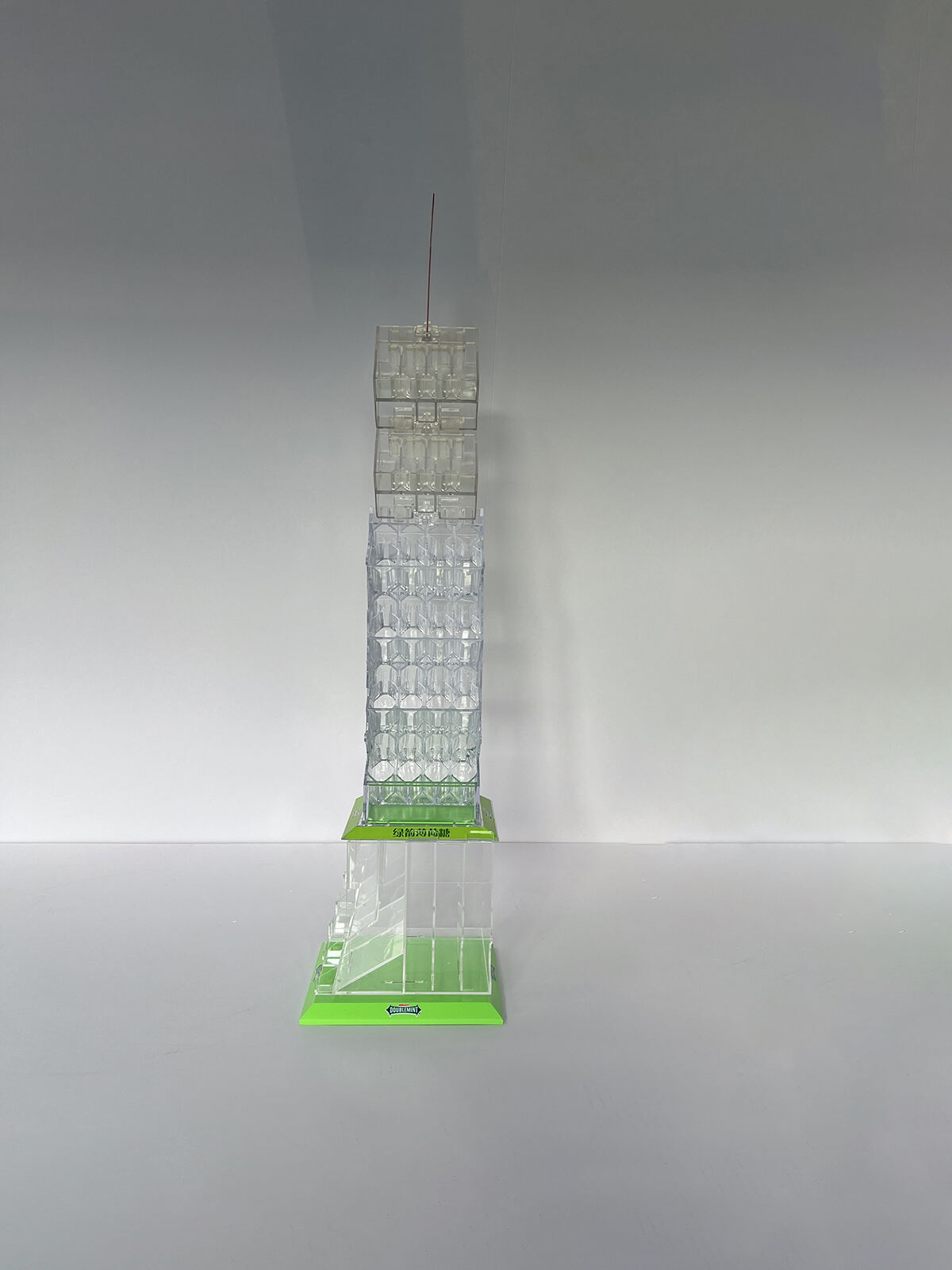Proper maintenance of commercial display equipment represents a critical investment in retail success and operational efficiency. When it comes to metal display rack systems, implementing systematic care protocols ensures extended service life, optimal product presentation, and sustained customer engagement. Understanding the fundamental principles of metal display rack preservation helps businesses maximize their fixture investments while maintaining professional retail environments that drive sales performance.

Modern retail environments demand display solutions that withstand constant product handling, environmental stress, and heavy traffic conditions. Metal display fixtures offer superior durability compared to alternative materials, yet they require specific maintenance approaches to preserve their structural integrity and aesthetic appeal. The combination of proper cleaning techniques, preventive care measures, and strategic inspection protocols creates a comprehensive maintenance framework that protects retail investments.
Professional retailers recognize that well-maintained display equipment directly correlates with improved product visibility, enhanced customer experience, and increased merchandise turnover rates. By establishing routine maintenance schedules and implementing proven care strategies, businesses can avoid costly replacements while ensuring their display systems continue performing at peak effectiveness throughout their operational lifespan.
Essential Daily Cleaning Protocols
Surface Preparation and Assessment
Beginning each cleaning session with thorough surface assessment ensures appropriate cleaning method selection and identifies potential maintenance issues before they escalate. Remove all merchandise and accessories from the metal display rack to provide complete access to all surfaces, joints, and structural components. This initial step allows for comprehensive inspection while preventing damage to displayed products during the cleaning process.
Visual examination should focus on identifying scratches, dents, loose connections, or signs of corrosion that might require specialized attention. Document any observed issues to track recurring problems and establish patterns that might indicate underlying structural concerns or environmental factors affecting equipment longevity.
Appropriate Cleaning Solution Selection
Different metal finishes require specific cleaning formulations to maintain their protective coatings and aesthetic properties. Powder-coated surfaces benefit from mild detergent solutions mixed with warm water, avoiding abrasive chemicals that might compromise the finish integrity. Stainless steel components respond well to specialized stainless steel cleaners that remove fingerprints and water spots while preserving the natural luster.
Chrome-plated elements require gentle cleaning agents that won't strip the protective plating or cause pitting damage. Always test cleaning solutions on inconspicuous areas before applying them to visible surfaces, ensuring compatibility and preventing unexpected reactions that could damage the metal display rack finish.
Weekly Deep Maintenance Procedures
Structural Integrity Verification
Weekly maintenance sessions should include comprehensive structural assessments that examine all connection points, support brackets, and load-bearing components. Check bolt tightness using appropriate tools, ensuring all fasteners maintain proper torque specifications without over-tightening that could damage threading or create stress concentrations.
Inspect adjustable shelf mechanisms for smooth operation and proper alignment, lubricating moving parts with appropriate lubricants that won't attract dust or debris. Examine weight distribution patterns across shelf surfaces, looking for signs of excessive loading that might cause permanent deformation or compromise structural stability over time.
Protective Coating Maintenance
Protective finishes require regular attention to maintain their barrier properties against corrosion and wear. Apply appropriate protective treatments according to manufacturer specifications, ensuring complete coverage of all exposed metal surfaces. Pay special attention to high-contact areas where frequent handling might wear protective coatings more rapidly.
Address minor scratches or chips in protective coatings immediately using touch-up materials matched to the original finish specifications. Early intervention prevents corrosion from developing in exposed areas while maintaining the uniform appearance that contributes to professional retail presentation standards.
Seasonal Maintenance Strategies
Environmental Impact Assessment
Seasonal environmental changes significantly impact metal display rack performance and longevity requirements. High humidity periods increase corrosion risks, particularly in coastal locations where salt air accelerates oxidation processes. Monitor environmental conditions and adjust maintenance frequency accordingly, implementing additional protective measures during challenging seasonal periods.
Temperature fluctuations cause metal expansion and contraction that can affect joint integrity and finish adhesion. Schedule comprehensive inspections during seasonal transitions to identify and address issues related to thermal stress before they compromise structural performance or aesthetic quality.
Preventive Protection Implementation
Implement seasonal protection strategies that address specific environmental challenges in your retail location. Apply additional protective coatings before high-humidity seasons, ensuring enhanced corrosion resistance during challenging periods. Consider temporary protective measures for outdoor or semi-outdoor display applications exposed to weather extremes.
Develop contingency plans for severe weather events that might affect display equipment, including procedures for temporary relocation or enhanced protection of valuable fixtures. These preparations protect investments while ensuring rapid restoration of normal operations following adverse conditions.
Long-term Preservation Techniques
Strategic Component Replacement
Long-term maintenance success requires strategic planning for component replacement and system upgrades. Identify wear patterns and failure modes specific to your operational environment, developing replacement schedules that prevent unexpected failures while maximizing component service life. Maintain inventory of critical replacement parts to minimize downtime during maintenance activities.
Consider upgrading high-wear components with enhanced materials or improved designs that offer superior durability or performance characteristics. These strategic improvements can significantly extend overall system life while reducing long-term maintenance requirements and operational costs.
Documentation and Record Keeping
Comprehensive maintenance documentation provides valuable insights for optimizing care protocols and planning future equipment investments. Record all maintenance activities, including cleaning procedures, inspection findings, and component replacements. This documentation helps identify trends and patterns that inform strategic maintenance decisions.
Maintain detailed records of environmental conditions, usage patterns, and performance metrics that correlate with maintenance requirements. This data enables predictive maintenance approaches that address issues before they impact operational effectiveness while optimizing resource allocation for maximum return on maintenance investments.
Troubleshooting Common Issues
Corrosion Prevention and Treatment
Corrosion represents the most significant long-term threat to metal display equipment integrity and appearance. Implement proactive prevention strategies that address corrosion risks before visible damage occurs. Regular application of appropriate protective treatments creates barriers against moisture and chemical exposure that cause oxidation damage.
When corrosion does appear, address it immediately using appropriate removal techniques and protective restoration procedures. Minor surface rust can often be removed with gentle abrasives and treated with protective coatings, while more extensive corrosion might require professional restoration services to prevent structural compromise.
Mechanical Wear Management
Mechanical wear in adjustable components and moving parts requires systematic management to maintain optimal functionality. Regular lubrication of moving parts prevents excessive wear while ensuring smooth operation under normal loading conditions. Use appropriate lubricants that remain effective in your operational environment without attracting contamination.
Monitor wear patterns in high-use areas and implement protective measures that distribute loading more evenly across structural components. Consider installing wear plates or protective coverings in areas subject to frequent contact or heavy loading to extend service life and maintain appearance standards.
Professional Service Integration
Expert Assessment Scheduling
Professional maintenance services provide expertise and capabilities beyond typical in-house maintenance programs. Schedule regular professional assessments that evaluate overall system condition and identify potential issues requiring specialized attention. Professional services can perform complex repairs, restoration procedures, and structural modifications that extend equipment service life.
Establish relationships with qualified service providers who understand metal display rack systems and can provide emergency support when needed. Professional partnerships ensure access to specialized tools, replacement parts, and expertise that maintain operational continuity during challenging maintenance situations.
Warranty and Service Agreement Management
Proper maintenance practices often influence warranty coverage and service agreement terms. Understand manufacturer requirements for maintenance documentation and procedure compliance to preserve warranty protection. Follow recommended maintenance schedules and use approved cleaning products and procedures to avoid voiding warranty coverage.
Consider extended service agreements that provide professional maintenance services and replacement part coverage. These agreements can reduce long-term maintenance costs while ensuring consistent care quality that preserves equipment value and performance throughout its operational life.
FAQ
How often should metal display racks undergo professional maintenance?
Professional maintenance frequency depends on usage intensity and environmental conditions, but most retail environments benefit from quarterly professional assessments. High-traffic locations or challenging environmental conditions might require monthly professional attention, while low-use applications could extend intervals to semi-annually. Regular professional maintenance prevents minor issues from developing into costly repairs while ensuring optimal performance and appearance standards.
What cleaning products should be avoided on metal display equipment?
Avoid abrasive cleaners, bleach-based solutions, and acidic chemicals that can damage protective coatings and metal surfaces. Steel wool, scouring pads, and other abrasive cleaning tools should never be used on finished surfaces. Ammonia-based cleaners can cause discoloration and finish damage, while chlorine-based products accelerate corrosion processes. Always use manufacturer-approved cleaning products specifically formulated for metal display equipment finishes.
How can businesses extend the service life of their display rack investments?
Service life extension requires consistent maintenance practices, appropriate loading management, and environmental protection measures. Implement daily cleaning routines, conduct regular inspections, and address issues immediately when discovered. Avoid exceeding weight capacity specifications and distribute loads evenly across shelf surfaces. Protect equipment from environmental extremes and maintain stable indoor conditions when possible.
What warning signs indicate the need for immediate professional attention?
Structural instability, visible corrosion damage, loose or damaged connections, and finish deterioration require immediate professional assessment. Unusual noises during adjustment or loading, visible stress cracks, and bent or deformed components indicate potential safety hazards that need expert evaluation. Any condition that might compromise structural integrity or create safety risks should be addressed immediately by qualified professionals to prevent accidents and protect both personnel and merchandise.

